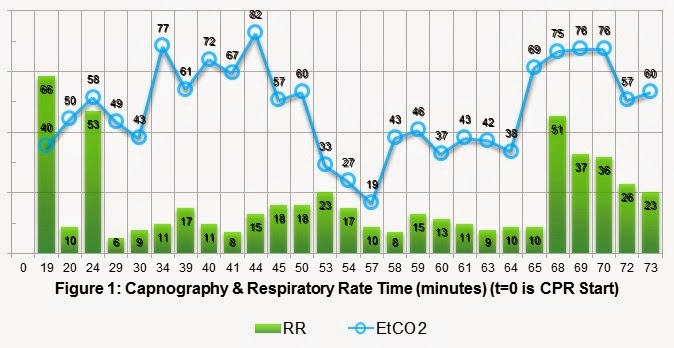Myths in medicine take too long to go away. Longboards are yet another modality that
serve no purpose except to harm our patients.
Luckily this unnecessary tool used by EMS is going away around the
world. Many states and cities have
completely stopped using longboards for ALL patients. These places include areas within
Connecticut, Los Angeles, Kansas, Oregon, Missouri, Houston, New Mexico,.etc. No matter what your injuries are, in many
regions throughout the world, you will not be placed on a longboard, because they
are not being used at all.
These devices have hurt our patients since they offer no
benefit, yet we continue to use them in our region. The misconceptions about these devices are
enormous, yet the science tells us the following...
Longboards:
Longboards:
1.
Worsen the pain of patients resulting in more
unnecessary imaging tests and more radiation exposure.
2.
Cause respiratory compromise/decreased pulmonary
function by lying patients flat.
3.
Delay on-scene time for trauma patients.
4.
Result in pressure sores for patients by rapid tissue
breakdown from the board.
5.
Increase the risk of aspiration.
Unfortunately, we continue to have folks who spread misconceptions
about these devices, which prevent us from moving forward with evidence based
medicine. Luckily, a lot of places are
ignoring these folks and moving forward.
Some of the incorrect EMS statement that we have heard are:
1.
The DOT makes me put everyone on a longboard.
2.
I will get my license/certification taken away
if I don’t use a longboard.
3.
The DHSS does not allow patients to be brought
to hospitals without a longboard.
4.
If someone else puts a patient on a longboard, I
cannot take the patient off.
5.
It splints the back. (No, in fact it was only designed to help
extricate patients.)
6.
I will get sued if I don’t put someone on a
longboard
These are all ridiculous, and it is great that many places
around the country are moving forward with the science. Lets make 2015 the year we get rid of these
terrible devices in New Jersey and around the country.
Following the science, in January 2015, we will be telling
EMS providers that they do not need to place anyone on a longboard that is
brought into our hospital. Please join
us in getting rid of this outdated modality and provide the same information to
EMS.
References:
1. Chan D, Goldberg R, Tascne A, et al. The effect of spinal
immobilization on healthy volunteers. Ann Emerg Med. 1994;23:48-51.
2. March JA, Augband SC, Brown LH. Changes In Physical
Examination Caused By Use Of Spinal Immobilation. Prehospital Emerg Care. 2002;
6: 421-424.
3. Schriger DL, Larmon B, LeGarrick T, et al. Spinal
immobilization on a flat backboard: Does it result in neutral position of the cervical
spine? Am J Emerg Med. 1991;20:878-81.
4. Schafermeyer RW, Ribbeck BM, Gaskins J, et al.
Respiratory effects of spinal immobilization in children. Ann Emerg Med. 1991;20:1017-1019.
5. Bauer D, Kowalski R. Effect of spinal immobilization
devices on pulmonary function in the healthy nonsmoking man. Ann Emerg
Med.-1988; 17:915-8.
6. Barney RN, Cordell WH, Miller E. Pain associated with
immobilization on rigid spine boards (Abstract). Ann Emerg Med.1989; 18:918.
7. Chan D, Goldberg, RM, Jennifer Mason, J et al., Backboard Versus
Mattress Splint: A Comparison Of
Symptoms. The Journal of Emergency Medicine. 1996. 14:193-298.
8. Totten VY, Sugarman DB, Respiratory Effects Of Spinal Immobilization.
Prehosp Emerg Care 1999;3:347-352
9. Hauswald M, McNally T. Confusing Extrication with Immobilization:
The Inappropriate Use of Hard Spine Boards for Interhospital Transfers. Air Med
J. 2000; 19: 126-127
10. Hauswald M,Braude D.Spinal immobilization in trauma
patients: is it really necessary?_Current
Opinion in Critical Care 2002;8:566–70.
11. Hauswald M,Ong G,Tandberg D,Omar Z. Out-of-hospital spinal
immobilization: its effect on neurologic
injury. Academic Emergency Medicine 1998;5:214-219.
12. S. Abram S, Bulstrode C. Routine spinal
immobilization in trauma patients: What are the advantages and disadvantages? The
Surgeon. 2010;8:218–222.
13. Connell RA, Graham CA, Munro PT. Is spinal
immobilization necessary for all patients sustaining isolated penetrating
trauma? Injury. 2003;34: 912–914.
14. Kaups KL, Davis JW. Patients With Gunshot Wounds To The
Head Do Not Require Cervical Spine Immobilization And Evaluation. J Trauma.
1998; 44:865– 867.
15. Haut ER, Efron
DT, Adil H, Haider AH et al. Spine
Immobilization in Penetrating Trauma: More Harm Than Good? The Journal of
Trauma. 2010; 68.
16. Cornwell EE, Chang DC, Bonar JP, et al. Thoracolumbar
immobilization for trauma patients with torso gunshot wounds: is it necessary?
Arch Surg. 2001;136:324 –327.
17. Hauswald M, Ong G, Tandberg D, Omar Z. Out-of-hospital
spinal immobilization: its effect on neurologic injury. Acad Emerg Med. 1998;5:214
–219.
18. Kaups KL, Davis JW. Patients with gunshot wounds to the
head do not require cervical spine immobilization and evaluation. J Trauma.
1998;44:865–867.
19. Mark Hauswald, MD, Darren Braude, MD, MPH .Diffusion of
Medical Progress: Early Spinal Immobilization in the Emergency Department. Academic
Emergency Medicine 2007; 14:1087–1089.


